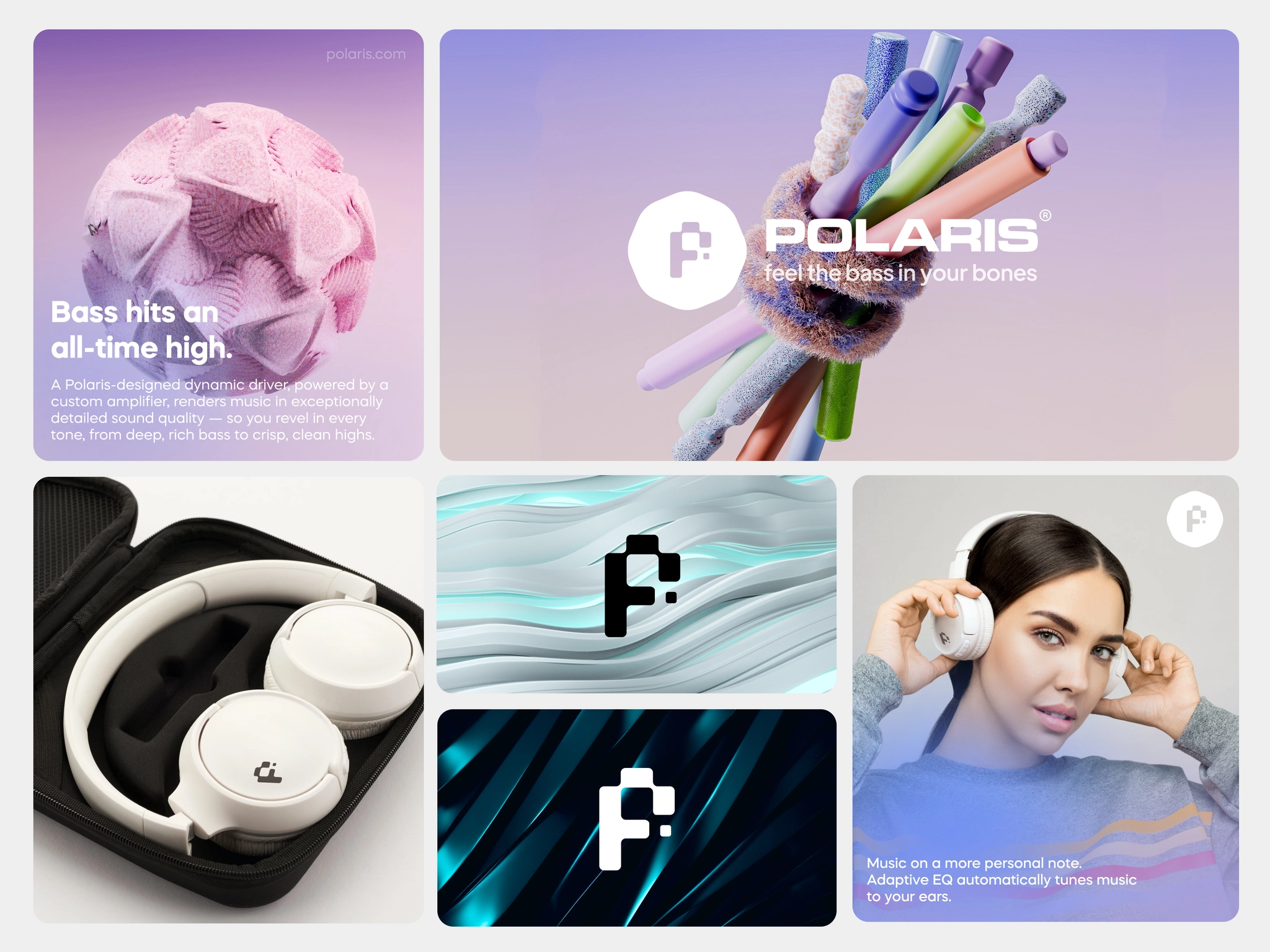

The world of music is a competitive landscape where countless bands and artists strive to make their mark. In such a crowded industry, standing out and making a lasting impression on the audience is crucial for success. This is where band branding comes into play. By developing a strong brand identity, bands can establish a unique and recognizable presence that resonates with their audience. In this article, we’ll explore the concept of band branding, its importance, and the steps involved in creating a compelling brand for a musical group.
The importance of building a strong brand identity for a music band cannot be underestimated. In this competitive world, a consistent and standout brand can be the key to differentiating oneself from competitors and capturing the attention of the target audience. In this case, our primary target audience is graphic designers and music owners.
By understanding their needs and preferences, we can design a brand identity that aligns with their tastes. From creating an appealing and innovative logo, selecting colors that reflect the emotions of the music brand identity, to choosing unique typography, everything should be aimed at creating a strong and memorable impression. Furthermore, consistency in brand usage across various media and platforms will help reinforce the impression and remind the audience of the music band. By building a strong brand identity, the music band can stand out among the crowd and build enduring relationships with their audience and fans.
Band branding refers to the process of creating a distinctive identity for a musical group that sets it apart from others in the industry. It involves developing a cohesive visual style, crafting a brand story, and shaping the band’s personality and values. Effective band branding helps musicians connect with their target audience on a deeper level, fostering loyalty and creating a lasting impression.

An impactful band branding strategy encompasses various elements, such as a distinctive logo, visually captivating album artwork, carefully curated color schemes, typography choices that reflect the band’s personality, and a consistent visual language across their promotional materials. These elements work in harmony to create a cohesive and recognizable brand identity that resonates with the target audience.
Moreover, band branding extends beyond visual aspects and incorporates other touchpoints like social media presence, merchandise design, live performances, and the band’s overall persona. Consistency and authenticity across these platforms help solidify the band’s identity and foster a deeper connection with their fans.
By investing in band branding, musicians can establish a strong foothold in the music industry, differentiate themselves from competitors, and leave a lasting impression on their target audience. A compelling brand identity acts as a powerful tool for standing out, gaining recognition, and creating a loyal following in the highly competitive music landscape.
Building a strong brand identity is crucial for a music band as it plays a pivotal role in fostering a deep emotional connection with the audience. It transcends the music itself and enables fans to forge a meaningful relationship with the band’s story, values, and personality. A successful band branding strategy creates a sense of belonging and community, where fans can identify with the band on a personal level. By authentically expressing their unique identity and engaging in purposeful storytelling, a band can establish a distinctive presence in the industry.
To achieve this, it is important to carefully craft the band’s brand elements. Starting with a captivating and memorable logo, the visual representation becomes a symbol that fans can easily recognize and associate with the band. Selecting colors, typography, and imagery that align with the band’s style and genre helps reinforce the intended emotional impact. Consistency in branding across various touchpoints, such as album covers, merchandise, social media platforms, and live performances, strengthens the overall brand experience and reinforces the band’s identity in the minds of fans.
Moreover, an effective band branding strategy involves creating a cohesive narrative that resonates with the target audience. Sharing the band’s story, inspirations, and values through various channels helps fans connect with the band on a deeper level. By communicating a consistent brand message, both visually and verbally, the band can establish a unique identity that distinguishes them from others in the industry.
Band branding helps in carving a niche for the group within the industry. It allows musicians to highlight their unique strengths and qualities, making it easier for fans and industry professionals to identify and remember them. Effective branding ensures that a band is not easily interchangeable with others, setting them apart in a crowded market.
To create a compelling brand for a musical group, several key elements need to be considered:

The band’s name and logo are the foundation of its brand identity. A memorable and distinctive name combined with a well-designed logo
cements the band’s visual and auditory identity in the minds of the audience. It should reflect the band’s personality, genre, and overall image.
Consistency in visual elements is crucial for band branding. This includes color schemes, typography, album artwork, and promotional materials. A cohesive visual identity helps in building recognition and reinforcing the band’s brand message.
Defining the band’s personality is essential for connecting with the audience. Is the band energetic and rebellious or introspective and mellow? Understanding and consistently portraying the brand’s personality traits in their music, visuals, and interactions creates a distinct brand identity.
Storytelling is a powerful tool for band branding. Sharing the band’s story, inspirations, and journey creates an emotional connection with the audience. Compelling narratives help fans relate to the band on a personal level, fostering loyalty and engagement.

To maximize the impact of band branding, it needs to be implemented consistently across various platforms:
A band’s website and social media profiles should reflect its brand identity. Use consistent visual elements, share engaging content, and interact with fans to strengthen the brand’s presence and build a community.
Merchandise and album artwork are valuable touchpoints for fans. Ensure that they align with the band’s brand identity, as they contribute to brand recognition and serve as physical representations of the brand.
A band’s live performances should embody its brand identity. Consider stage setup, costumes, and interactions with the audience to create a memorable and consistent brand experience.
In the fiercely competitive music industry, band branding is an essential element for success. By establishing a unique identity, connecting with the audience, and differentiating from competitors, bands can leave a lasting impression and build a loyal fan base. Through careful consideration of elements like band name and logo, visual identity, brand personality, and brand storytelling, a strong brand identity can be created. Implementing branding consistently across platforms, measuring success through analytics, and leveraging SEO techniques further enhance a band’s visibility and impact.
To brand a band, start by identifying the band’s unique qualities, musical style, and target audience. Next, translate these elements into a cohesive brand strategy that spans across visuals (like logos, album covers, merchandise) and communication channels (website, social media, live performances).
Musical branding involves creating and using a unique sound, melody, or theme that becomes synonymous with a brand, helping it to establish its identity, enhance its recognition, and connect emotionally with its audience
To brand yourself as an artist, start by defining your unique style and message. What sets you apart? Then, create a consistent visual identity – this includes your logo, portfolio layout, and online presence
An artist brand strategy is a plan that outlines how an artist will present and promote themselves to the world, distinguishing their unique style, persona, and message. This strategy includes elements like the artist’s visual aesthetic (e.g., logos, album art, photography), the tone and style of their communications (e.g., social media posts, interviews), and their engagement with fans